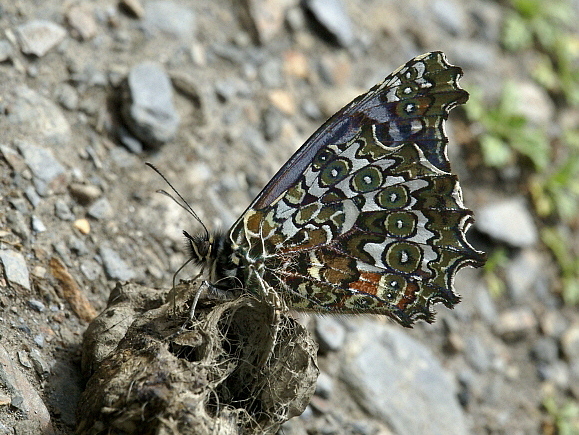
Introduction
There are 1100 known species of Satyrinae in the neotropical region. About 570 of these are placed in the subtribe Pronophilina – a diverse group of high altitude cloudforest butterflies, all of which are confined to the neotropical region. The vast majority are found only in the Andes, but 4 species are known from the Atlantic cloudforests of Brazil, and there are a further 6 species that are endemic to Guatemala, Costa Rica or Mexico. More oddly there is one genus Calisto that is found exclusively on the Caribbean islands of Cuba and Hispaniola.
Junea are allied to Pseudomaniola, Thiemeia and Daedalma. These genera are all characterised by having scalloped wing margins and prominent ocelli. There are 2 species of Junea, namely doraete and dorinda. Both have brown uppersides marked with whitish spots that form a single row on the outer forewings of dorinda, and a double row on doraete.
Junea doraete occurs from Colombia to southern Peru, and possibly Bolivia.
Habitats
This scarce and rarely glimpsed species frequents the transitional zone where the paramo / puna grasslands merge with stunted cloudforest at altitudes between 2800-3500m in the Andes. I have only encountered doraete twice – at Pululuhua Crater in Ecuador, and at Manu cloudforest in the eastern Andes of southern Peru.
Lifecycle
The lifecycle appears to be unrecorded. The following generalisations are applicable to the subtribe Pronophilina and are probably applicable to Junea: The eggs are globular, white or pale greenish white, and laid singly on the foodplants or on surrounding vegetation. The larvae are typically pale brown, marked along the back and sides with narrow dark stripes, and tapering towards each end. The head is large in proportion to the body and has two short forward-pointing horns. The tip of the abdomen is equipped with a pair of caudal prongs which are used to flick the frass away from the feeding area. The larvae of all known Pronophilina feed on Chusquea – a genus of bamboo which grows in thickets, mainly along the courses of streams.
Adult behaviour
At Pululuhua Crater in Ecuador I found a male doraete aggregating with Lasiophila and Lymanopoda species, all feeding at the corpse of a small snake which had been run over by a vehicle. In Manu in Peru I found 4 males feeding at mammal dung by the roadside at an altitude of 3370m. They were so engrossed in feeding that they were oblivious of my presence, and even ignored heavy vehicles that passed close by. However they were extremely sensitive to changes in temperature and light level, flying up to settle on the trunks of stunted trees whenever cloud caused the temperature to drop slightly. The return of sunshine a few minutes later caused them to return and recommence feeding at the dung.
